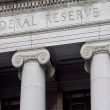Plantar Fasciitis?
by Jeffrey Saut, Chief Investment Strategist, Raymond James
“About ten years ago I had an acute case of plantar fasciitis in the left foot, a condition in which the fascia, or the covering right beneath the skin, had become highly inflamed. I asked Pete Egoscue, a renowned postural specialist but one without medical training, to take a look at my foot. Pete had, after all, healed a number of people I knew, including my wife. Because Pete was self-taught, I was a skeptic – as any good trader would be. Pete said that he did not need to look at my foot because my foot was not the problem – a response that suggested I was dealing with a quack. But I was patient and continued to listen. He proceeded to explain that the pain in my left foot was the consequence of a structural, postural deficiency in my hip alignment. My right hip was rotated in such a fashion as to make the left side of my body do all the work and bear all the weight, culminating in the inflammation of my left foot. ‘The pain you feel in your left foot is just the symptom,’ Pete said. ‘If you treat it symptomatically and ignore the structural issue, you will never solve the problem.’ I did not immediately grasp the full meaning of his words, but I followed his prescription and in a few days the pain was gone. Some time later I realized that those words were probably the wisest I have ever heard from any human being, and that they apply to more than just the human body.”
“The root cause of the unemployment woes is quite obvious. In the United States alone, in the last two decades, nearly six million jobs in manufacturing have been lost overseas. This equates to nearly four percentage points of the current 9.7% US unemployment rate. As importantly, the migration of these jobs contributed to the most unsustainable economic imbalance in the world today – China’s persistent bilateral trade surplus with the United States. During the last decade, China accumulated almost $1.4 trillion of US debt and at least $2.3 trillion in global assets. These figures could grow to $3.8 trillion and $7 trillion, respectively, over the next decade if the current renminbi/US dollar (RMB/USD) exchange rate continues to be artificially suppressed from appreciating. One entity owning this much debt of one debtor, let alone a foreign government, creates too much risk concentration, and has possibly repressed volatility for debtor and creditor alike. The risk may seem manageable now, but who knows what the nature and temperament of the Chinese and American leaders will be in ten years? Isn’t it possible that either side could weaponize financial imbalances to the detriment of domestic and global stability?”
... Paul Tudor Jones (10/26/10)
He said, “(Your problem is) the consequence of a structural, postural deficiency in your hip alignment.” Similarly, the world’s biggest “structural problem” is the misalignment of China’s Renminbi (aka, its currency); and as stated, “If you treat it symptomatically and ignore the structural issue, you will never solve the problem.” Fifteen years ago China devalued its currency by ~50% in a single day (1/1/1994) and has experienced a manufacturing/export boom ever since. Indeed, 15 years ago China didn’t even register as one of the top trading partners with any of the G20 countries. Today it is the biggest trading partner for six of them. Interestingly, in January 1981 the Renminbi was changing hands at $0.6551 basis the U.S. dollar (RMB/USD). In 1Q94, following the devaluation, the RMB/USD exchange rate stood at $0.1144. It resided in the range of $0.1144 to $0.1208 until the summer of 2005, when cajoled by the U.S. Congress, the Chinese reluctantly began to revalue the Renminbi upward. It currently trades at $0.153889, and while that is roughly a 35% appreciation over the past six years, it is still materially undervalued. In fact, on an absolute purchasing power basis many savvy seers believe the Renminbi is 60% undervalued.
In past missives I have opined that China is slowly revaluing its currency in an attempt to create more domestic demand, dampen its inflation rate, and placate U.S. leaders. To be sure, the Chinese realize in the long-run the manufacturing/export driven economic model will eventually morph to the lower cost of labor, which is quickly becoming the Vietnams of the world. Accordingly, they are following what Brazil did with its currency (the Real) a few years ago. To wit, Brazil raised interest rates and increased the value of its currency. Surprisingly, Brazil’s economy continued to perk along, inflation subsided, and domestic demand improved. I see no reason why that formula won’t work for China as well. Therefore, going “long” the Renminbi still seems like a good investment strategy. As former Treasury Secretary Lawrence Summers states, “When somebody writes the history of our time 50 or 100 years from now it will be about how the world adjusted to the movement of the theater of history towards China.”












